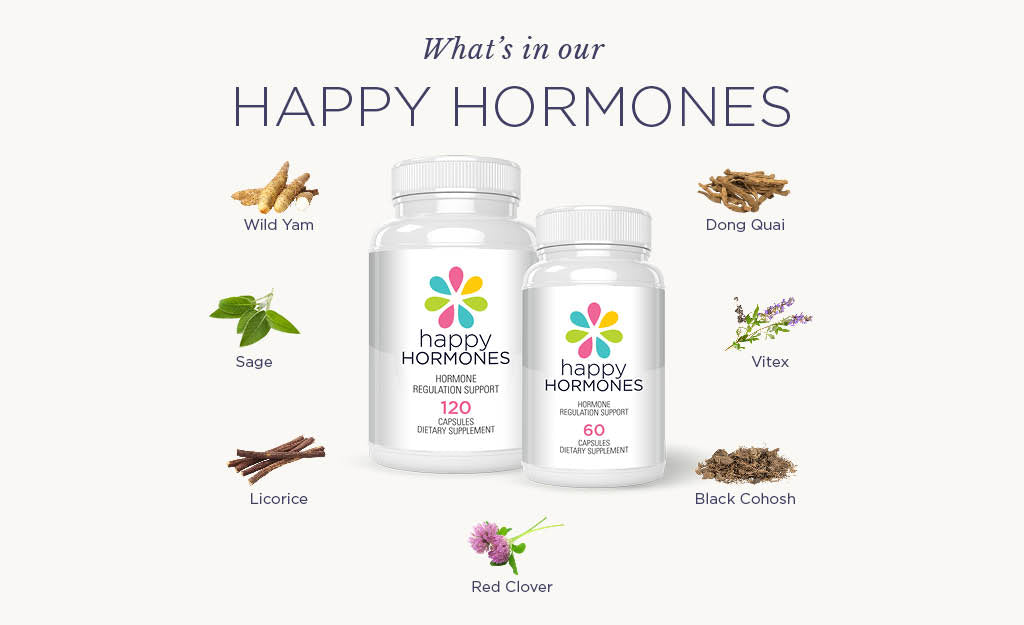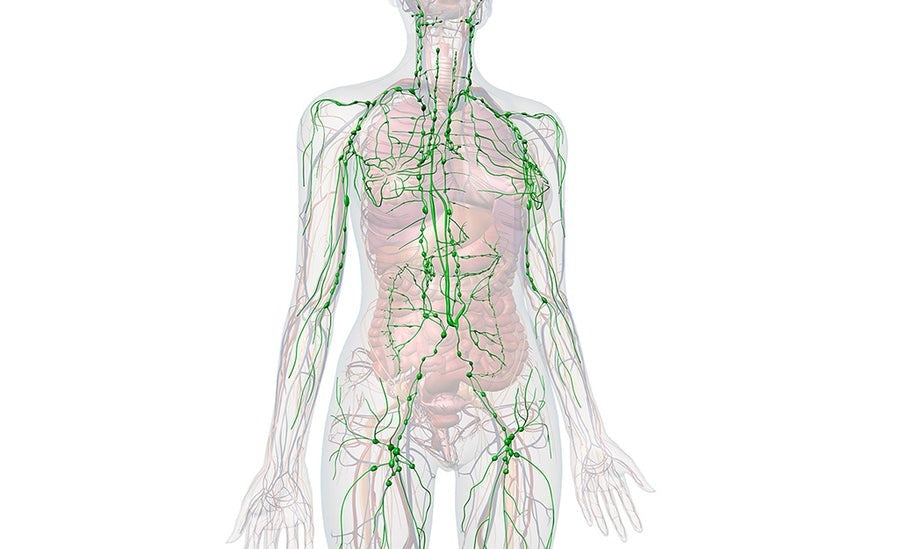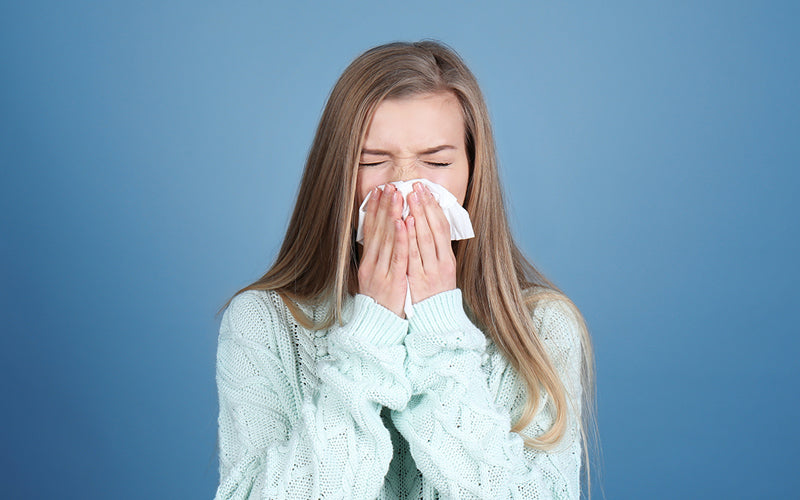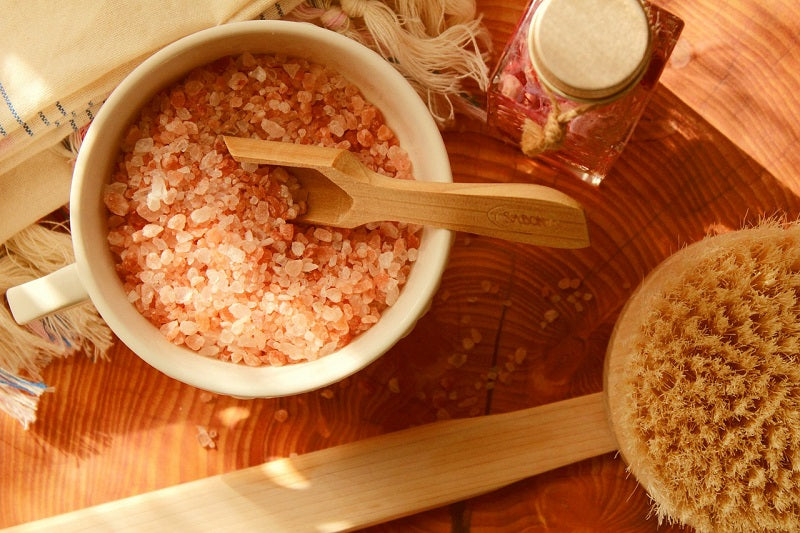How Does Happy Hormones Work?
The reason Happy Hormones works so well, in such a broad spectrum of hormonal disorders, is not because of the ingredients, but rather the philosophy that underpins its approach.
Instead of trying to regulate hormone levels by focusing on hormones, we disregard hormones and focus on a higher level where hormones are actually regulated. Put simply;
"Happy Hormones regulates the hormone control centre in the brain - the hypothalamic-pituitary axis."
This is a polar opposite approach to the medical system that tries to regulate hormones by giving hormones. It's a very archaic method that only further disrupts the endocrine system.
The endocrine system needs to regulate itself through a negative feedback system. When one gland is activated, then another works to deactivate it, so that the body does not run out of control. Hormones are just the messengers of the body, but the glands are the conductors. When a hormone is prescribed for a hormonal condition, you are effectively forcing the endocrine system into further imbalance. Your body also then stops or limits the production of that hormone, making the fundamental situation worse.
The phytomedicines used in Happy Hormones act by balancing the body's own internal control mechanisms, such as the endocrine system, nutrient status, receptor sites, detoxification and excretion ability. Treating the cause of the symptoms, not just the symptoms themselves allows for a more profound level of healing.
These phytomedicines allow the body to naturally balance hormone levels through improved endocrine function, hormone breakdown, excretion and sensitivity. You cannot correct a hormonal imbalance by providing additional hormones. It's impossible. It's like trying to find the end of a rainbow - it's always shifting! By prescribing additional hormones, quietly other imbalances are being created. The symptoms may improve temporarily; however, you can guarantee the body is adjusting to the hormones in another way.
Happy Hormones is the result of over 20 years of treating hormonal conditions and observing reactions to different treatments. Through trial and error, it was observed that other glands were involved, which typically weren't considered as part of hormonal imbalances.
For example, the thyroid, adrenals and pancreas are usually not considered when hormonal symptoms are presented. However, we often see thyroid conditions and blood sugar imbalances in women with hormonal symptoms. Women often crave sugars premenstrually and PCOS is clinically linked with insulin resistance.
Through experimentation, it was understood that the whole endocrine system had to be taken into consideration to improve hormonal symptoms. This is why Happy Hormones is so effective in so many varied hormonal conditions. Because the true cause of the imbalance is being treated - endocrine dysfunction, not the hormonal imbalance.
The following diagram is of the body's own hormone control centre, the hypothalamus/pituitary axis which is where all major sex hormones are controlled in the body. There are several ingredients in Happy Hormones which control this centre.
When you balance the hormone control centre, then you control and balance hormones. It's surprisingly simple but works very well. Women often comment on how Happy Hormones can be so effective for all age groups. This is because all women have the same mechanism that controls hormones. Whether you are 15 or 55, the same mechanism is at the heart of the issue. Balance the control centre and balance your hormones. It's that simple!

How the ingredients in Happy Hormones work together
Cimicifuga Racemosa – Black Cohosh

The benchmark in complementary medicines for regulating hormonal imbalance is a herbal medicine known as Cimicifuga Racemosa (Black Cohosh).
Cimicifuga is one of the most scientifically proven herbal medicines in the world today. It has been proven to be effective in a range of gynaecological complaints. Cimicifuga regulates the hypothalamic-pituitary axis (HPA), the master hormone control system. When the hypothalamic-pituitary axis is regulated, a profound and lasting effect can be achieved in hormonal balance.
Pharmacological studies have demonstrated Cimicifuga Racemosa contains substances with endocrine activity, causing a selective reduction of the serum concentration of pituitary luteinizing hormone (LH) and is able to bind to oestrogen receptor sites. It is postulated that the active ingredient Triterpene Glycosides have an effect on the hypothalamus-pituitary system, which leads to secondary balancing effects upon the reproductive and sympathetic/parasympathetic nervous systems.
Numerous studies have proven Cimicifuga racemosa to be effective in hormonal complaints associated with premenstrual syndrome and menopause.
In one such study, Cimicifuga racemosa at a dose of 80mg per day was found to be effective in PMS, with freedom from symptoms in 84% of cases. This is a staggering percentage, considering the complex mechanisms of development for hormonal disorders. Cimicifuga is also well known for its ability to effectively treat menopausal symptoms, with dozens of clinical trials to substantiate the action. In fact, Cimicifuga is the most popular complementary medicine for the treatment of menopause, with millions of women worldwide benefiting from the hormonal regulatory effect.
Using the Hamilton Anxiety Scale (HAMA) Cimicifuga Racemosa was shown to improve nervousness and irritability by 86.5%, depressive moods by 82.5% and sleeping problems by 76.8%. Stolze, H: Gyne 1, 14-16 (1982)
The true benefit setting Cimicifuga apart from other herbal medicines is the ability to treat a wide range of hormonal imbalance symptoms. Whether the imbalance is excessive or deficiency of progesterone, oestrogen, Luteinizing hormone or follicle stimulating hormone, Cimicifuga has a balancing effect, due to its influence on the glandular system. No other herbal medicine or conventional medicine is so versatile in its action. This regulating action can be demonstrated through the effectiveness of Cimicifuga in treating both menopausal symptoms and premenstrual symptoms - where the blood hormone levels are completely opposite.
Don’t be confused, however, that because Cimicifuga alleviates menopausal symptoms that it must be raising oestrogen levels. It is not. It balances the pituitary, and hence it regulates oestrogen levels - whether they are high or low.
Vitex Agnus Castus

Vitex, better known as the Chaste tree is a well-studied herbal medicine working primarily on female disorders.
Best known for its treatment of PMS, Chaste tree has the ability to improve the levels of progesterone which are typically reduced in many women. Apart from progesterone production, it appears Chaste tree has an effect in regulating the larger glandular system. This has been shown through studies demonstrating the increase in both melatonin and dopamine levels.
These hormones, although not directly linked to female hormonal imbalance, play an important role in the improvement of symptoms - as dopamine assists with depression, whilst melatonin improves sleep quality - hence improving the overall well-being in women with hormonal imbalance.
In addition, Chaste tree has been shown to improve breast cysts, polycystic ovarian syndrome, endometriosis, uterine fibroids, peri-menopause and menopause.
Raspberry leaf

Raspberry leaf has long been used by herbalists as a tonic for female disorders, particularly for the preparation of childbirth, through its action on improving the health and muscle tone of the uterus.
Most physical symptoms of hormonal imbalance affect the pelvic region, such as endometriosis, ovarian cysts, uterine fibroids and polycystic ovarian disorder. Hence it is critical to include remedies to improve the circulation and tone in the pelvic region.
Balancing the hormones is often not enough to stimulate healing, as the physical symptoms remain. This is where raspberry leaf plays a critical role in a holistic treatment to recover fully from hormonal imbalances.
Maca

Maca is a relatively new discovery in the western herbal medicine, although it has been used as a health tonic in Peru for thousands of years.
Maca is known to have an adaptogenic effect - which means it works to balance the larger glandular imbalance. Maca’s main action is on the adrenal glands and hypothalamus to control and balance cortisol levels. By managing cortisol levels (stress hormone), other reproductive hormones come into balance such as progesterone which is why Maca is used to effectively treat infertility and PMS.
Maca also has an action to improve sleep and menopausal disorders. Maca is also highly nutritive which is why it gets its name as a superfood. Rich in B vitamins and minerals Maca has a reputation as an aphrodisiac.
Sage

Sage has traditionally been used for a wide variety of health conditions including digestive disorders, nervous conditions and infections due to its highly volatile oil content.
Of interest for hormonal imbalances, Sage has a balancing effect on the pineal gland. Very few herbs have this effect which is why it becomes such a valuable remedy when the aim is to create an overall glandular imbalance rather than treating symptoms alone.
The pineal gland is the master controlling gland in the brain, having an effect on the total glandular function. This effect on the pineal gland has shown sage to be particularly useful for the treatment of menopausal flushing.
Gymnema

Gymnema is a herbal medicine which is often not thought of for hormonal disorders. However, it does have a powerful indirect effect on hormonal imbalance.
Symptoms of blood sugar imbalance, such as sugar cravings, are common with hormonal imbalances, such as PCOS and premenstrually. This is because the glandular system is intricately linked. It is a complete system and when one gland is imbalanced it affects the function of another.
Insulin resistance is a trigger for hormonal imbalances and actually is one of the causative factors. Particularly involved are premenstrual symptoms, polycystic ovarian syndrome and fibroids, which all have links with sugar intake. Hence Gymnema plays an important role in the holistic approach to treating the whole condition rather than mere symptoms.
Passionflower

Passionflower has a very gentle yet powerful effect on the hormonal system. Acting on the nervous system, passionflower reduces the level of stress hormones, which when in high concentrations negatively affect the glandular balance.
When stress hormones are elevated, reproductive hormones are reduced. It's a natural coping mechanism to reduce the reproductive ability in difficult times. In modern times, however, where stress is a constant companion, there are negative implications on the reproductive system and hormonal balance.
Passionflower helps to reduce the levels of stress hormones, improving sleep, and symptoms of depression. Although not directly linked to treating hormonal symptoms, the effect of passionflower cannot be underestimated in the total treatment of the condition.
Dandelion root

Very few doctors and naturopaths would ever consider using dandelion root for a hormonal condition. Yet it is an important inclusion in Happy Hormones.
Dandelion root is a powerful liver tonic. The liver function is essential in breaking down and excreting blood hormones. When this does not happen effectively, there is a recirculation of the hormones, which confuses the glandular system. When synthetic hormones are taken, it's also essential that the body correctly breaks down and excretes these hormones to avoid a double-whammy, so to speak.
Dandelion also acts as a digestive stimulant, which is important since constipation is a causative factor in the development of hormonal imbalances. If the body cannot excrete hormones in an appropriate time, then again there is a double effect.
Finally Dandelion acts as a gentle diuretic which prevents fluid retention. Many women complain of bloating with hormonal imbalances, so Dandelion assists in this area to improve comfort levels.
Liquorice

Liquorice is another herb which is often not considered in hormonal imbalances. However, when you understand the dynamics of the causative factors of hormonal conditions it becomes a helpful addition.
Liquorice has an effect on the adrenal glands by supporting the adrenals in times of stress, and assists to lower cortisol levels. When cortisol levels are high, this causes the thyroid to reduce its function - so it's an important herb to consider.
Liquorice also has an effect as a natural anti-inflammatory and in many hormonal conditions, there is a situation where excessive inflammation occurs, such as endometriosis, PCOS, fibroids and even PMS. So down-regulating the inflammatory response helps to accelerate the healing process.
Liquorice also has an effect on regulating the blood sugar levels.
Wild Yam

Commonly recognised as a herbal medicine to improve progesterone levels, Wild Yam is a well-proven and effective herb.
Wild yam also has an effect on the adrenal glands to improve adrenal exhaustion and fatigue associated with prolonged stress levels. Wild yam is often used in herbal creams as progesterone creams. We find it more effective when used in combination with other hormonal balancing herbal medicines, to give a complete effect, rather than just focusing on progesterone levels.
Psyllium husk

Psyllium husk is a simple plant-based soluble fibre which improves digestive motility. In other words, it assists to improve bowel regularity.
Fibre also assists as a food source for healthy bacteria in the gut, which is important for hormonal function and breakdown.
Thyroid support
Happy Hormones does not have an effect on the thyroid directly. It was a deliberate decision because there are no herbal medicines which regulate the thyroid.
They either stimulate or reduce thyroid function - and this goes against the philosophy of the formula. Ironically, we have discovered, however, that once the rest of the endocrine system is restored, the thyroid often corrects itself - primarily from the balancing of the pituitary gland, which controls thyroid function.
Synergism
Finally, the formula is not just about the ingredients but the delicate balance of each. Herbal medicines can enhance the effect of the other when in the right combination.
So over many years, the levels of the ingredients have been adjusted to obtain the best possible activity of each, to work as a singular formula.
Summary
Happy Hormones will work on its own, through the mechanism of balancing hormones via the brain's control centre. However, you need to understand there are many reasons why this mechanism is out of balance, to begin with.
Most common reasons are stress, synthetic hormones, poor sleep, alcohol consumption, sugar intake, lack of exercise, and even childbirth, all contribute to an imbalance. So it's important to not disregard these elements as part of the healing and balancing process.
This is why we developed all the free supporting programs that go along with Happy Hormones to get the best results. The program improves digestive and liver function, helping to improve hormone metabolism; and removes all the processed foods which can disrupt the endocrine balance.
Yes, HH will work on its own - but your results will be amplified and more sustainable if you can follow our other advice as well - which is a condensed form of over 20 years experience balancing women's hormones.
As a starting point we strongly suggest taking our free online assessment. We will provide you with a comprehensive report to get started with Happy Hormones and all our advice.
If you would like to purchase Happy Hormones, please visit our store.

REFERENCES
Ruying Tang, Linyuan Wang, Aimin Li. Antianxiety and anti-depressant effects of Maca (L. meyenii) ethanolic extract on chronic unpredictable mild stress of rats through hypothalamic-pituitary-adrenal axis. SDRP Journal of Food Science & Technology. 2019. Vol 4:4.
http://www.openaccessjournals.siftdesk.org/articles/pdf/Antianxiety-and-anti-depressant-effects-of-Maca20190528011420.pdf
Alexander Panossian, Georg Wikman. Evidence-based efficacy of adaptogens in fatigue, and molecular mechanisms related to their stress-protective activity. Current Clinical Pharmacology. 2009. Sep;4(3):198-219.
https://doi.org/10.2174/157488409789375311
Pontus Karling, Mikael Wikgren, Rolf Adolfsson, and Karl-Fredrik Norrback. Hypothalamus-Pituitary-Adrenal Axis Hypersuppression Is Associated with Gastrointestinal Symptoms in Major Depression. Journal of Neurogastroenterology and Motility. 2016. 22(2): 292-303.
https://doi.org/10.5056/jnm15064
























